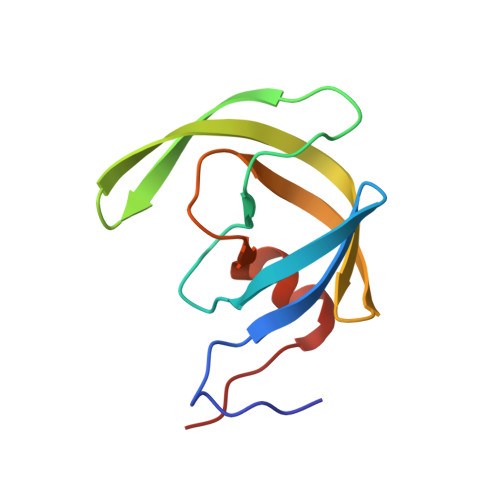GRL-09510, a Unique P2-Crown-Tetrahydrofuranylurethane -Containing HIV-1 Protease Inhibitor, Maintains Its Favorable Antiviral Activity against Highly-Drug-Resistant HIV-1 Variants in vitro.
Amano, M., Miguel Salcedo-Gomez, P., Yedidi, R.S., Delino, N.S., Nakata, H., Venkateswara Rao, K., Ghosh, A.K., Mitsuya, H.(2017) Sci Rep 7: 12235-12235
- PubMed: 28947797
- DOI: https://doi.org/10.1038/s41598-017-12052-9
- Primary Citation of Related Structures:
5V4Y - PubMed Abstract:
We report that GRL-09510, a novel HIV-1 protease inhibitor (PI) containing a newly-generated P2-crown-tetrahydrofuranylurethane (Crwn-THF), a P2'-methoxybenzene, and a sulfonamide isostere, is highly active against laboratory and primary clinical HIV-1 isolates (EC 50 : 0.0014-0.0028 μM) with minimal cytotoxicity (CC 50 : 39.0 μM). Similarly, GRL-09510 efficiently blocked the replication of HIV-1 NL4-3 variants, which were capable of propagating at high-concentrations of atazanavir, lopinavir, and amprenavir (APV). GRL-09510 was also potent against multi-drug-resistant clinical HIV-1 variants and HIV-2 ROD . Under the selection condition, where HIV-1 NL4-3 rapidly acquired significant resistance to APV, an integrase inhibitor raltegravir, and a GRL-09510 congener (GRL-09610), no variants highly resistant against GRL-09510 emerged over long-term in vitro passage of the virus. Crystallographic analysis demonstrated that the Crwn-THF moiety of GRL-09510 forms strong hydrogen-bond-interactions with HIV-1 protease (PR) active-site amino acids and is bulkier with a larger contact surface, making greater van der Waals contacts with PR than the bis-THF moiety of darunavir. The present data demonstrate that GRL-09510 has favorable features for treating patients infected with wild-type and/or multi-drug-resistant HIV-1 variants, that the newly generated P2-Crwn-THF moiety confers highly desirable anti-HIV-1 potency. The use of the novel Crwn-THF moiety sheds lights in the design of novel PIs.
Organizational Affiliation:
Departments of Infectious Diseases and Hematology, Kumamoto University School of Medicine, Kumamoto, 860-8556, Japan.















